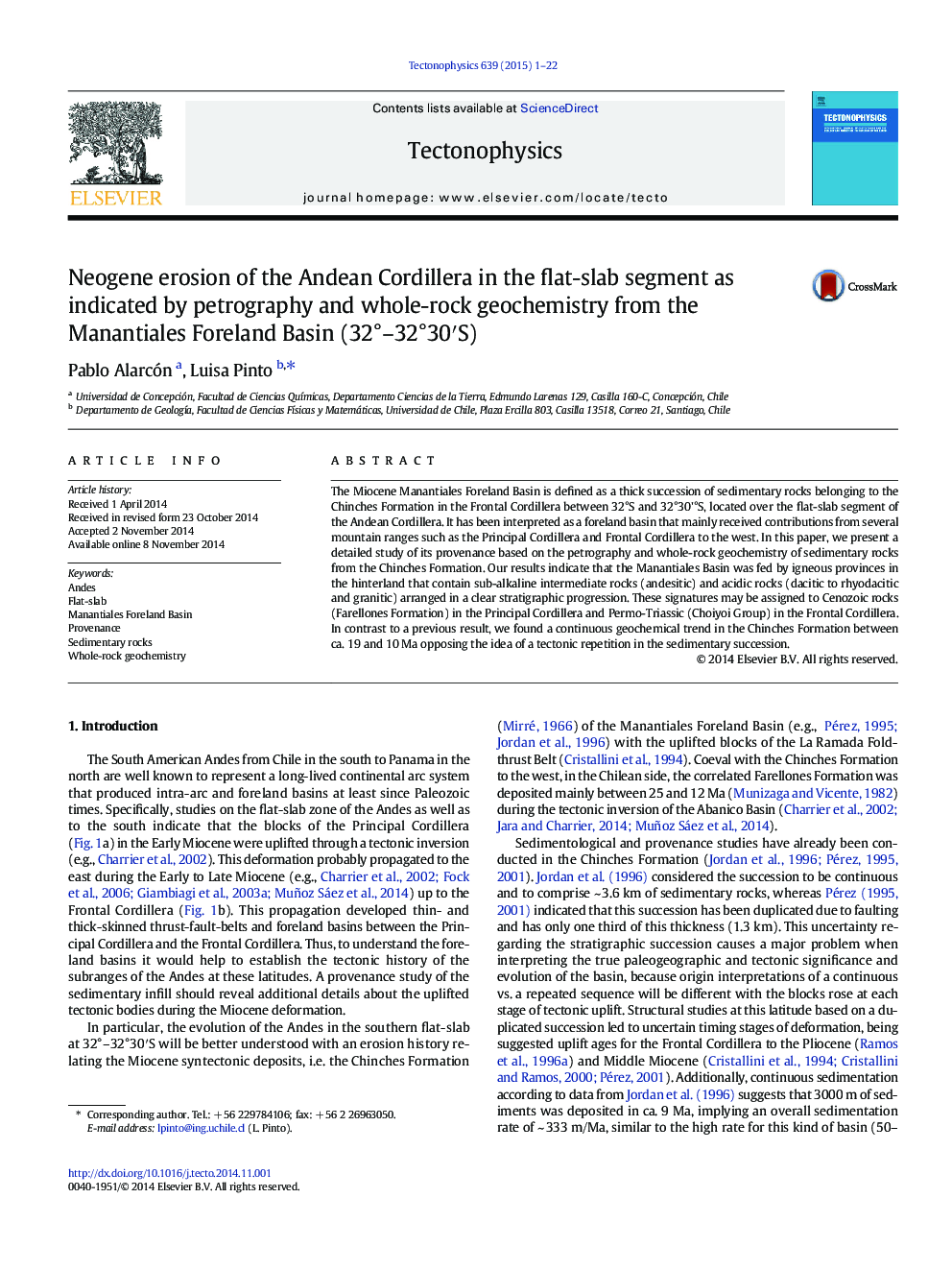| کد مقاله | کد نشریه | سال انتشار | مقاله انگلیسی | نسخه تمام متن |
|---|---|---|---|---|
| 4691769 | 1636752 | 2015 | 22 صفحه PDF | دانلود رایگان |

• We analyzed geochemical provenance on a synorogenic foreland basin.
• We determined a geochemical continuity in the sedimentary succession, without repetition.
• We established a geochemical progression since intermediate to acid in the succession.
The Miocene Manantiales Foreland Basin is defined as a thick succession of sedimentary rocks belonging to the Chinches Formation in the Frontal Cordillera between 32°S and 32°30'°S, located over the flat-slab segment of the Andean Cordillera. It has been interpreted as a foreland basin that mainly received contributions from several mountain ranges such as the Principal Cordillera and Frontal Cordillera to the west. In this paper, we present a detailed study of its provenance based on the petrography and whole-rock geochemistry of sedimentary rocks from the Chinches Formation. Our results indicate that the Manantiales Basin was fed by igneous provinces in the hinterland that contain sub-alkaline intermediate rocks (andesitic) and acidic rocks (dacitic to rhyodacitic and granitic) arranged in a clear stratigraphic progression. These signatures may be assigned to Cenozoic rocks (Farellones Formation) in the Principal Cordillera and Permo-Triassic (Choiyoi Group) in the Frontal Cordillera. In contrast to a previous result, we found a continuous geochemical trend in the Chinches Formation between ca. 19 and 10 Ma opposing the idea of a tectonic repetition in the sedimentary succession.
Journal: Tectonophysics - Volume 639, 12 January 2015, Pages 1–22